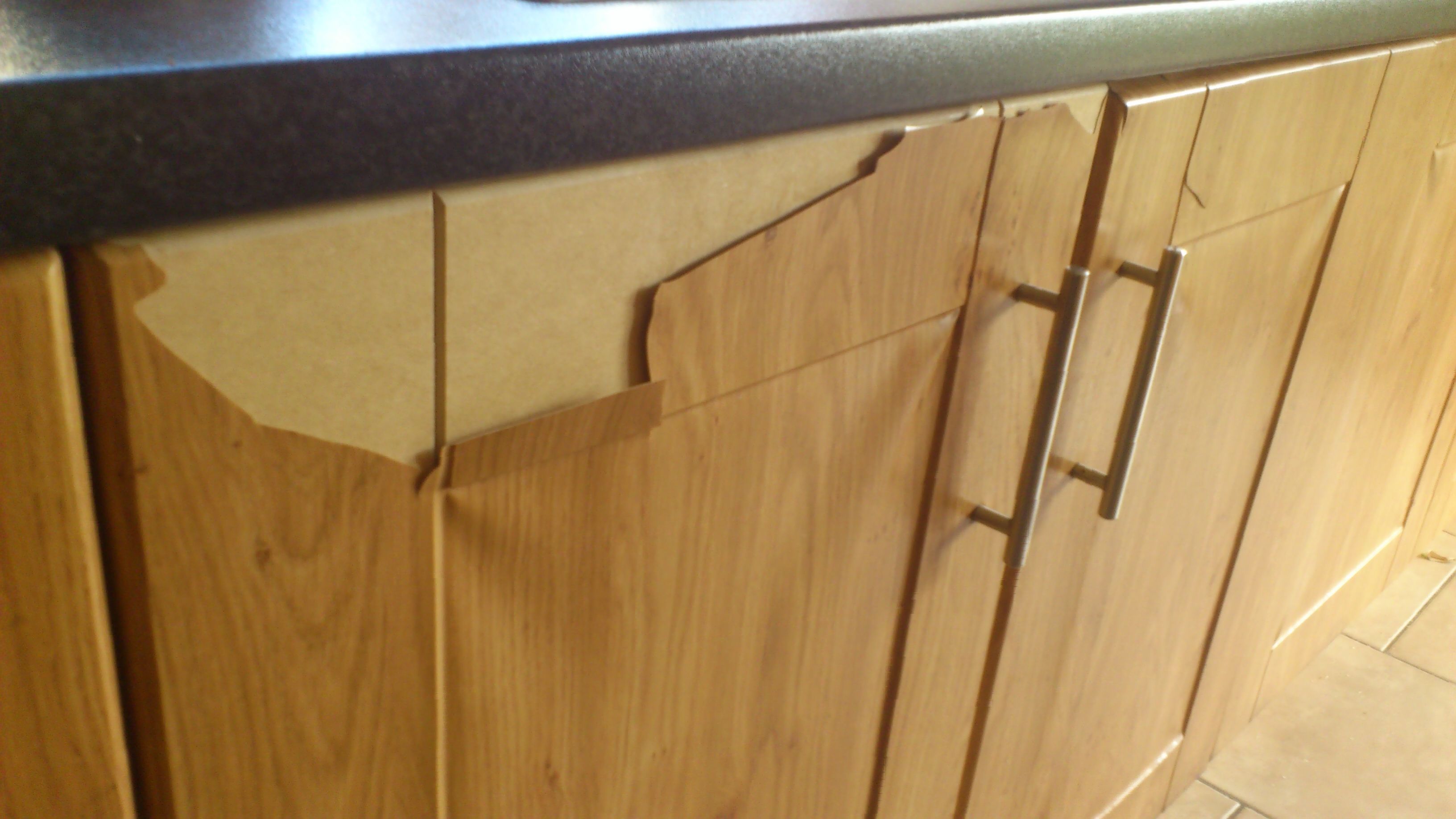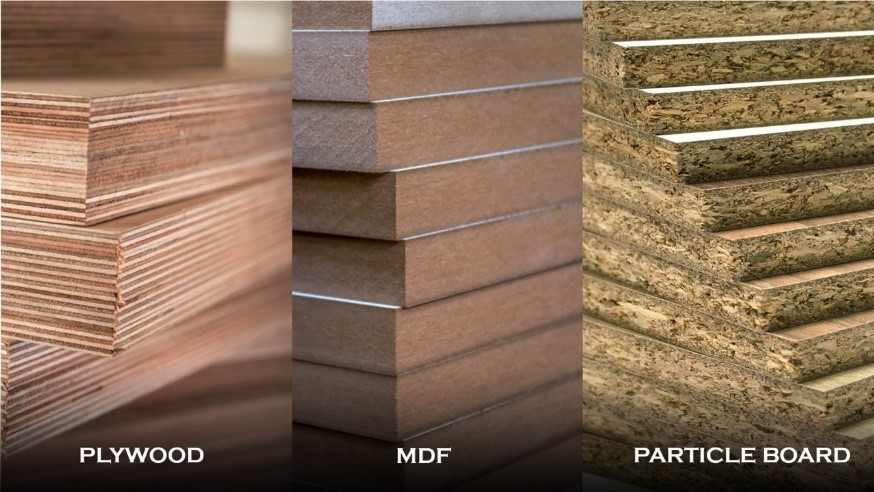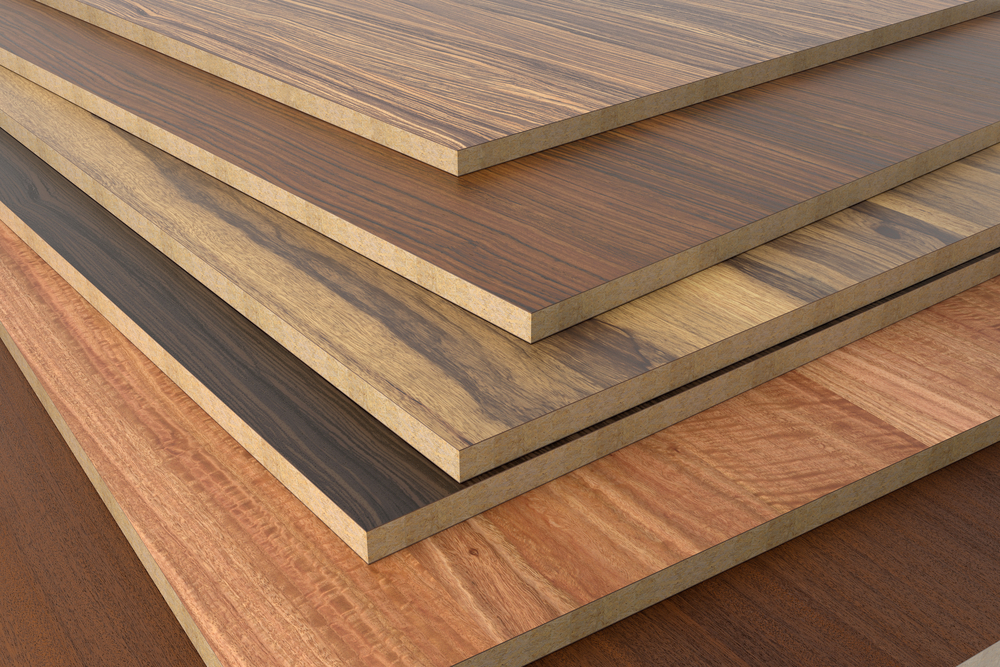What is Laminate Wood?: What Is Laminate Wood Cabinets

Laminate wood is a versatile and popular material used in various applications, including cabinet construction. It offers a balance of durability, affordability, and aesthetic appeal.
Composition of Laminate Wood
Laminate wood is composed of multiple layers, with a core material sandwiched between surface layers. The core material provides structural support, while the surface layers contribute to the aesthetic appeal and durability.
The core material can be made from various materials, including:
- Particleboard: This is the most common core material for laminate wood. It’s made from wood chips or sawdust that are bonded together with resin. Particleboard is affordable, lightweight, and readily available.
- Medium-density fiberboard (MDF): This material is made from wood fibers that are compressed and bonded together with resin. MDF is denser and smoother than particleboard, making it suitable for applications requiring a fine finish.
- Plywood: Plywood consists of thin layers of wood veneer that are glued together with alternating grain directions. Plywood is strong, stable, and less prone to warping than particleboard or MDF.
The surface layers are typically made from thin sheets of decorative paper impregnated with resin. These layers are laminated onto the core material under high heat and pressure. The surface layers can be patterned to mimic various wood species, solid colors, or even unique designs.
Advantages of Laminate Wood for Cabinet Construction
Laminate wood is a popular choice for cabinet construction due to its numerous advantages:
- Durability: The laminated surface provides a protective layer that resists scratches, dents, and stains. This makes laminate wood cabinets more durable than cabinets made from other materials, such as solid wood.
- Water Resistance: The resin-impregnated surface layers create a barrier against moisture, making laminate wood cabinets suitable for areas prone to spills and humidity, such as kitchens and bathrooms.
- Affordability: Laminate wood is generally more affordable than solid wood or engineered wood. This makes it an attractive option for budget-conscious homeowners.
Comparison with Other Cabinet Materials
Laminate wood is often compared to other cabinet materials, such as solid wood and engineered wood.
Solid Wood
Solid wood cabinets are known for their natural beauty and durability. However, they are also more expensive than laminate wood cabinets. Solid wood is susceptible to warping, cracking, and moisture damage.
Engineered Wood
Engineered wood, such as plywood and medium-density fiberboard (MDF), offers a balance of affordability and durability. However, engineered wood is not as water-resistant as laminate wood and may not be as aesthetically pleasing as solid wood.
Laminate wood cabinets offer a balance of durability, affordability, and water resistance, making them a popular choice for homeowners looking for practical and stylish kitchen and bathroom cabinets.
Laminate Wood Cabinet Construction

Laminate wood cabinets are made using various core materials, each offering different levels of strength, stability, and cost. Understanding these construction methods helps you choose the right cabinets for your needs and budget.
Types of Laminate Wood Cabinet Construction, What is laminate wood cabinets
The core materials used in laminate wood cabinet construction play a crucial role in determining their durability, stability, and cost. The most common types of core materials include:
- Plywood: Plywood is composed of thin layers of wood veneer glued together with alternating grain directions. This cross-graining enhances strength and stability, making plywood a reliable choice for cabinet construction. Plywood is relatively expensive but offers good durability and resistance to warping.
- Medium-Density Fiberboard (MDF): MDF is made from wood fibers that are combined with resin and pressed into a dense board. MDF is known for its smooth surface, making it ideal for laminating. It’s generally more affordable than plywood but may not be as strong or stable, particularly in humid environments.
- Particleboard: Particleboard is created by combining wood chips or sawdust with resin and pressing them into a board. It’s the least expensive option but also the least durable. Particleboard is prone to warping and moisture damage, making it less suitable for high-stress applications or humid environments.
Advantages and Disadvantages of Different Cabinet Construction
Each core material offers distinct advantages and disadvantages:
| Core Material | Advantages | Disadvantages |
|---|---|---|
| Plywood | Strong and stable, resists warping, durable, good for humid environments | More expensive than MDF or particleboard |
| MDF | Smooth surface, affordable, good for laminating | Less strong and stable than plywood, susceptible to moisture damage |
| Particleboard | Most affordable | Least durable, prone to warping and moisture damage, not suitable for high-stress applications |
Common Laminate Wood Cabinet Finishes and Styles
Laminate wood cabinets offer a wide variety of finishes and styles to complement any décor:
- Finishes: Laminate finishes come in various colors, textures, and patterns, mimicking natural wood, stone, or even metallic finishes. Common laminate finishes include:
- Woodgrain: Provides a natural wood look and feel.
- Solid Color: Offers a clean and contemporary aesthetic.
- High Gloss: Adds a sleek and modern touch.
- Matte: Creates a subtle and sophisticated appearance.
- Styles: Laminate cabinets are available in various styles, from traditional to modern:
- Traditional: Features ornate details, raised panels, and classic hardware.
- Modern: Emphasizes clean lines, minimalist design, and sleek hardware.
- Contemporary: Blends traditional and modern elements, creating a sophisticated and stylish look.
Laminate Wood Cabinet Care and Maintenance

Laminate wood cabinets, known for their durability and affordability, require proper care and maintenance to retain their appearance and functionality over time. Regular cleaning and preventative measures can help protect the laminate surface from damage and extend the lifespan of your cabinets.
Cleaning and Maintaining Laminate Wood Cabinets
Regular cleaning is essential for maintaining the appearance and hygiene of laminate wood cabinets. Here are some best practices:
- Use a mild cleaner: A mixture of warm water and mild dish soap is generally sufficient for cleaning laminate surfaces. Avoid harsh chemicals, abrasive cleaners, or bleach, as these can damage the laminate finish.
- Wipe down regularly: Clean your cabinets at least once a week to remove dust, fingerprints, and spills. Use a soft cloth or sponge to avoid scratching the surface.
- Dry thoroughly: After cleaning, dry the cabinets completely with a clean cloth to prevent watermarks or mildew growth.
- Pay attention to the edges: Clean the edges of the cabinets thoroughly, as these areas are prone to dust and grime buildup.
Preventing Damage and Scratches
Laminate surfaces are relatively durable, but they can still be scratched or damaged if not handled properly. Here are some tips to prevent damage:
- Use protective mats: Place protective mats under heavy objects or appliances to prevent scratches and dents on the cabinet surfaces.
- Avoid sharp objects: Keep sharp objects away from the laminate surfaces, as these can easily scratch the finish. Use pot holders or trivets when placing hot items on the counter.
- Handle with care: Avoid dragging heavy items across the laminate surface, as this can cause scratches or damage. Lift and move heavy objects carefully.
- Use furniture pads: Attach felt pads to the bottom of furniture or appliances that sit on the countertop to prevent scratching.
Extending the Lifespan of Laminate Wood Cabinets
By following these tips, you can help extend the lifespan of your laminate wood cabinets:
- Avoid harsh chemicals: Harsh chemicals can damage the laminate finish, leading to discoloration or peeling. Use mild cleaners and avoid bleach or abrasive cleaners.
- Avoid excessive moisture: Prolonged exposure to moisture can cause warping or damage to the laminate. Wipe up spills promptly and avoid placing wet items directly on the cabinets.
- Maintain hardware: Regularly clean and lubricate cabinet hardware, such as hinges and knobs, to prevent rust and ensure smooth operation.
- Inspect for damage: Regularly inspect your cabinets for any signs of damage, such as scratches, dents, or loose hardware. Address any damage promptly to prevent further deterioration.
What is laminate wood cabinets – Laminate wood cabinets are a popular choice for kitchens and bathrooms, offering a durable and affordable alternative to solid wood. They’re particularly well-suited for smaller spaces, like those found in small one bedroom homes , where maximizing space is crucial.
Laminate’s resistance to moisture and scratches makes it ideal for high-traffic areas, ensuring your cabinets stay looking their best for years to come.
Laminate wood cabinets are a popular choice for kitchens and bathrooms due to their durability and affordability. The process involves layering a decorative paper over a core material, often MDF or particleboard, and then sealing it with a protective resin.
The versatility of laminate allows for a wide range of colors and patterns, including bold combinations like dark blue and orange bedroom themes. This vibrant contrast would be particularly striking in a modern kitchen, where the cabinets can serve as a focal point, creating a dynamic and energetic atmosphere.
